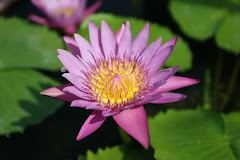Lomography is the commercial trademark of Lomographische AG, Austria for products and services related to photography. The name is inspired by the former state-run optics manufacturer LOMO PLC of Saint Petersburg, Russia. LOMO PLC created and produced the 35 mm LOMO LC-A Compact Automat camera - which became the centerpiece of Lomography's marketing and sales activities. This camera was loosely based upon the Cosina CX-1 and introduced in the early 1980s.
In 1991, the Austrian founders of Lomography discovered the Lomo LC-A. As the company states, they were "charmed by the unique, colorful, and sometimes blurry" images that the camera produced. After a series of international art exhibitions and aggressive marketing work, Lomography signed an exclusive distribution agreement with LOMO PLC - thereby becoming the sole distributor of all Lomo LC-A cameras outside of the Soviet Union. This monopolistic agreement, their viral/tribal marketing strategies and pricing philosophy have generated controversy.
Lomography emphasizes casual, snapshot photography. Characteristics such as over-saturated colors, off-kilter exposure, blurring, "happy accidents," and alternative film processing are often considered part of the "Lomographic Technique. Users are encouraged to take a lighthearted approach to their photography, and use these techniques to document everyday life, as the Lomo LC-A's small size, simple controls, and ability to shoot in low light encourages candid photography, photo reportage, and photo vérité through the much-touted "10 Rules.
Since the introduction of the original Lomo LC-A, Lomography has produced and marketed an entire line of their own branded analog cameras. Most Lomographic cameras are designed to produce a single photographic effect. For example, the Lomography Fisheye camera features a built-in wideangle lens, and shoots fisheye-distorted photos. In 2005, production of the original Lomo LC-A was discontinued. Its replacement, the LC-A+, was introduced in Fall 2006. The new camera, made in China rather than Russia, featured the original Russian lens manufactured by LOMO PLC. This changed as of mid-2007 with the lens now made in China as well.
Similar to Eastman Kodak's concept of the "Kodak moment," the Lomography motto of "don't think, just shoot" presumes spontaneity, close-ups, and ubiquity, while deemphasizing formal technique. Typical lomography cameras are deliberately low-fidelity and inexpensively constructed. Some cameras make use of multiple lenses and rainbow-colored flashes, or exhibit extreme optical distortions and even light leaks.
Current models marketed by Lomographische AG include Lomo LC-A, Diana, Holga, Holga 35mm, Actionsampler, Frogeye, Pop-9, Oktomat, Fisheye, Fisheye2, Colorsplash, Colorsplash Flash, F-stop Bang, SuperSampler, Horizon 202, Seagull TLR, and Smena 8M. The company also resells dead stock Polaroid cameras and Russian dead stock - the sort normally acquired at "quirky, old-school camera shops," as the company's web site puts it.
The Lomo LC-A lens effect can be digitally emulated with photo-editing software such as GIMP or Photoshop. In addition, the company's promotional web site for Lomography showcases many high-contrast photographs - with unusual saturation and color - that were created using the technique called cross processing in which film intended for developing in slide chemistry (E-6) is processed in photographic negative chemistry (C-41), and vice versa. This technique can be employed with any film camera and can be somewhat mimicked with digital software as well.




